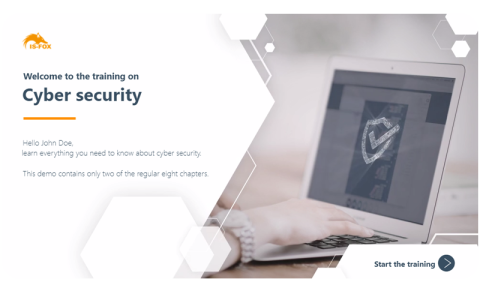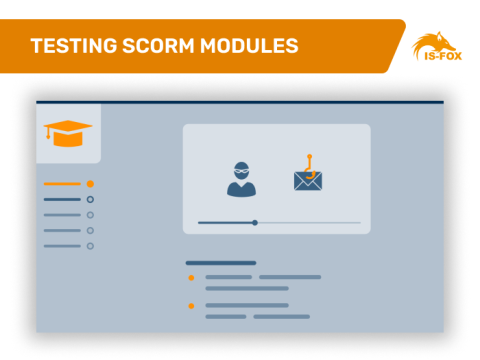In this article we'll talk about the technical terms of online training and e-learning.
Basically, there are three main elements of an e-learning: the Learning Management System (LMS) through which it is provided, the actual course with all the training content and the standard by which the two communicate with each other.
The Learning Management System
The Learning Management System is the central administration software for providing online courses to participants. Typical examples are SAP Successfactors, the open source LMS Moodle or our scalable and powerful IS-FOX Learning Management System.
In an LMS the individual learning courses are imported and users are created. These users are then assigned one or more learning courses. Usually the LMS will send an automatic e-mail invitation to users asking them to complete a certain course by a certain date, with one or two reminder e-mails if desired. This part is called "invitation management".
In the Learning Management System you can also track the course attendance and see statistics, for example how many users have started the course and how many have already successfully completed it. Many LMS offer a direct interface to HR systems, others only offer an export as Excel file.
The course content
The e-learning course contains the actual training content. Theoretically, this could even just be PDF or PowerPoint files, but with such formats, there will certainly be no learning success. Good E-Learning courses, like our Cyber Security E-Learning, are multimedia-based, contain videos, interactive exercises and maybe even different learning paths according the level of knowledge of the participant.
If you want to document a "successful" participation, the course requires a test or final quiz, usually with multiple choice questions. If these are answered correctly to a certain percentage (usually between 70 and 80%), the course reports a "passed test" back to the LMS.
Modern e-learning courses are developed in so-called "authoring tools". Well-known examples are Articulate's software Storyline or the Adobe product Captivate. You can imagine such an authoring tool like a 'beefed up' PowerPoint. You create individual slides and set triggers that determine what happens when someone presses a button or pushes an element. At the end you press a button and publish the course. Then the authoring tool uses a bit of magic to create a ZIP file with the complete learning course. You can then simply upload this ZIP file to your LMS.

The communication standard: SCORM & Co.
Let's tackle the question of how the course and the LMS 'talk' to each other. Thankfully there are international standards like the SCORM Standard. This means that almost every e-learning course will 'speak the same language' with most every LMS, virtually a universal translator between courses and LMS. Probably the best known standard, because it was the first e-learning standard, is SCORM. SCORM is an acronym for Sharable Content Object Reference Model. It defines quite rudimentarily what course and LMS can exchange. The LMS sends the name of the participant to the course, the course regularly sends back where the participant currently is and whether they have already passed. There are only two relevant values in SCORM:
- the completion measures whether all pages have been viewed. If so, the course reports 'completed' to the LMS.
- The second value is success. If the test was passed successfully, the course reports 'passed'.
That's it in a nutshell.
SCORM is actually very old. Version 1.2 was published in 1998, Version 2004 is from ... well, from 2004. Meanwhile there are much more powerful successors, for example xAPI. This technology comes more from the field of 'User Experience Tracking'. It allows you to track how long a user has been looking at what on which page and what they clicked on... basically what Amazon, Facebook and Co. collect from all of us when we surf on their pages. If you collect everything, you also know if all pages have been visited and if a test has been passed.
Although SCORM is really old and very basic, probably over 90% of all e-learning courses in the world are still running on the SCORM standard.
Why?
- Because it simply does what it is supposed to do.
- Because it's simplicity makes it easier for course administrators and SCORM courses run quite smoothly.
- And because in most cases it's absolutely sufficient to know whether someone has passed or not. How long it took, how many attempts were needed, etc., this information is actually not relevant in most cases. In countries like Germany, which has a traditionally strong co-determination, such information is often (and with good reason) not wanted.
However, modern authoring tools can publish a course in almost all relevant standards.
Truly sustainable employee training
Boost your employees' awareness of cyber security, data protection, compliance, and workplace safety with engaging content that truly sticks.
More e-learning knowledge from our blog

How to repackage familiar GDPR content into exciting online courses.

Find out how companies can properly motivate their employees to complete an e-learning course on cyber security, data protection or compliance.

Technical settings and tips for LMS administrators